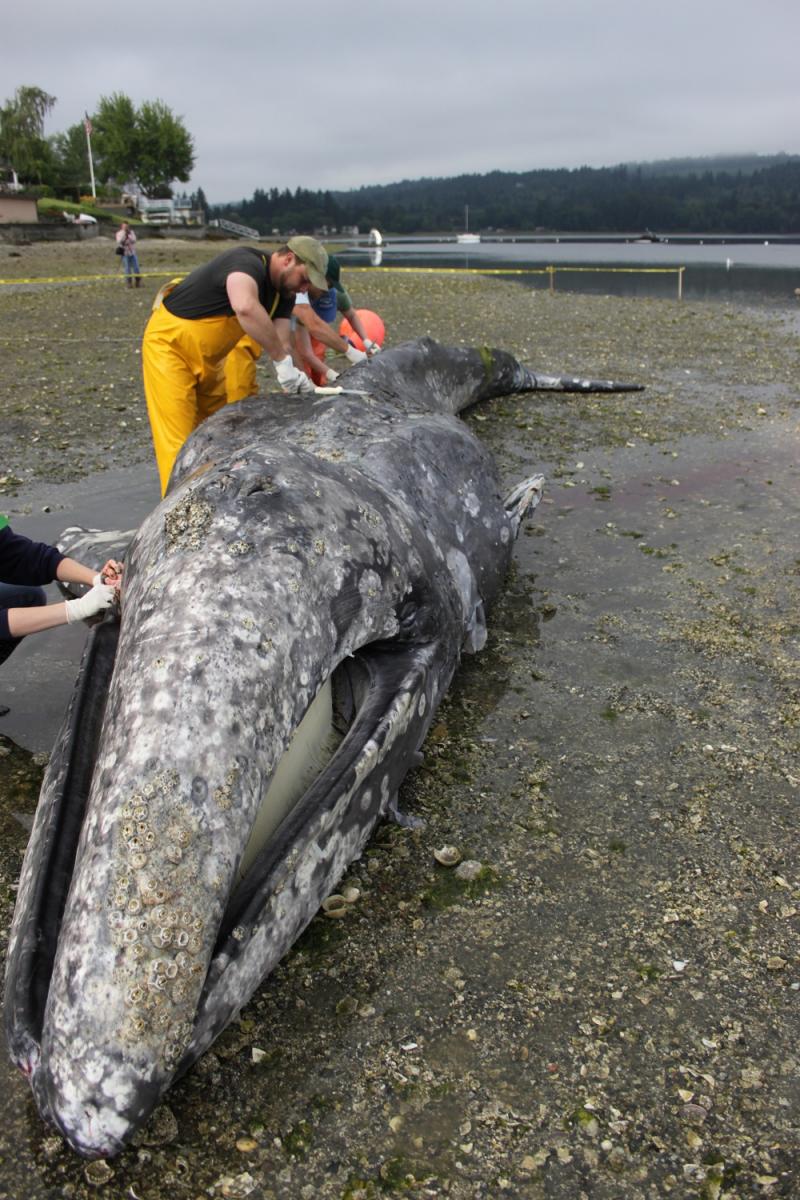A gray whale came ashore alive on a private beach in Bremerton on the morning of 27 July 2011. The 30-ft subadult whale died shortly after the initial stranding. Biologists from Washington Department of Fish and Wildlife and Cascadia Research conducted an initial exam before the tide came in and covered the whale. The whale was markedly thin, and had numerous lesions on the back, sides and abdominal area. The origin of these lesions is unknown, but we suspect they contributed to the overall poor condition of the animal. Minimal samples were collected at the site during the initial exam; a more extensive internal examination will be conducted within the next couple of days and will include sampling for histopathology, biotoxins, and contaminant analysis.
Gray whales are the most common large whale that is found stranded in Washington State with typically 4-6 gray whales stranding each year although most wash up already dead. During a major mortality event in 1999 and 2000, 50 gray whales washed up in total in those two years in Washington far exceeding normal numbers. This was the 4th stranded gray whale so far this year; there were two that died earlier in the year on the central Washington outer coast and one on Whidbey Island in April. So far these numbers are within the normal range for a typical year.
Bremerton gray whale update: 28 July 2011
Biologists and volunteers from Cascadia Research and Washington Department of Fish and Wildlife conducted an internal examination of the whale this morning, assisted by the veterinary staff of Compassionate Critter Care Veterinary Hospital, West Sound Wildlife and volunteers from the Seattle Seal Sitters Marine Mammal Stranding Network. Given the freshness of the whale, we were able to collect a number of tissue samples for a wide variety of testing, including bacteriology, toxicology, parasitology, virology, general disease screening, biotoxins and contaminants. The cause of the stranding is unconfirmed, but was likely the result of a variety of contributing factors. In addition to being in very poor nutritional condition, the examination revealed several internal abnormalities. Their origin and contribution to the death of this whale may be revealed when the lab results have been received, which may take several months. When more buoyant and easier to tow, the carcass will be moved to a location where it can decompose naturally. A local tribe is planning on recovering and preserving the skeleton.
Below are photos from the stranding taken on 27 July 2011.



